Nauka jazdy na łyżwach może na początku wydawać się trudna, ale z odpowiednim nastawieniem i sprzętem jest jak najbardziej możliwa. Największe wyzwanie? Równowaga. Stanie na cienkich ostrzach podczas ślizgania się po śliskim lodzie to zupełnie nowe doświadczenie dla nóg i mięśni core. Do tego strach przed upadkiem może powodować napięcie, co tylko utrudnia sprawę. Ale nie martw się – jak każda nowa umiejętność, praktyka przynosi postępy.
Dla początkujących kluczowe jest rozpoczęcie od podstawowych technik, takich jak bezpieczne wstawanie, maszerowanie do przodu i zatrzymywanie się (cześć, hamowanie pługiem!). Sprzęt też odgrywa dużą rolę. Podczas gdy standardowe łyżwy mogą wydawać się niestabilne, Snowfeet* Skiskates – kompaktowe łyżwy, które przypinasz do zimowych butów – oferują krótsze, bardziej stabilne ostrze, które łatwiej kontrolować. Są lekkie, przenośne i działają na lodowiskach, zamarzniętych stawach, a nawet na lekkim śniegu.
Oto sprawa: skup się na małych krokach, ćwicz regularnie i nie bój się upadków (to część procesu). Z cierpliwością i odpowiednim sprzętem szybko przejdziesz od chwiejności do pewności na lodzie.
jak jeździć na łyżwach jako CAŁKOWITY początkujący od profesjonalnego łyżwiarza figurowego i trenera
Typowe wyzwania, z którymi mierzą się początkujący ucząc się jazdy na łyżwach
Rozpoczęcie przygody z łyżwiarstwem może być mieszanką ekscytacji i, cóż, odrobiny niepewności. Pokonanie początkowych przeszkód – zarówno fizycznych, jak i mentalnych – może znacznie ułatwić tę drogę. Przyjrzyjmy się, co sprawia, że łyżwiarstwo jest tak wyjątkowym wyzwaniem.
Wyzwania fizyczne: równowaga i koordynacja
Balansowanie na cienkich ostrzach? Tak, to tak trudne, jak brzmi. Początkujący często instynktownie sztywnieją lub pochylają się za bardzo w jedną stronę, by nie upaść. Paradoksalnie, takie reakcje mogą jeszcze bardziej zaburzyć równowagę.
A potem jest czynnik mięśniowy. Łyżwiarstwo uwydatnia mięśnie, o których zwykle nie myślisz - takie jak kostki, łydki, uda i core. Te mięśnie nie są często używane na co dzień, więc nie jest niczym niezwykłym odczuwać ból po pierwszych kilku sesjach. Do tego ruch boczny wymaga nie tylko siły, ale też elastyczności i dobrej postawy. Jeśli twoje ciało nie jest odpowiednio ustawione, nawet podstawowe ruchy mogą wydawać się poważnym treningiem.
Wyzwania Mentalne: Pokonywanie Strachu i Budowanie Pewności Siebie
Nie zapominajmy o mentalnej stronie sprawy. Strach przed upadkiem to duży problem dla większości początkujących. Ten strach może sprawić, że się spięcie, co - niespodzianka - utrudnia utrzymanie równowagi. Ale oto dobra wiadomość: w miarę ćwiczeń i przyzwyczajania się do unikalnych ruchów łyżwiarstwa twoja pewność siebie będzie naturalnie rosła. Świadomość, że te trudności są tylko częścią krzywej nauki, pomoże ci pozostać pozytywnym i utrzymać realistyczne oczekiwania. Każde chwianie się i upadek to krok bliżej do płynnej jazdy.
Podstawowe Umiejętności, które powinien poznać każdy początkujący
Nauka podstaw łyżwiarstwa to klucz do budowania pewności siebie i czerpania radości z czasu spędzonego na lodzie.
Podstawowe Techniki do Opanowania
Stanie i Bezpieczne Wstawanie to punkt startowy dla każdego początkującego. Upadki są częścią procesu, więc nauka, jak bezpiecznie upadać i się podnosić, jest niezbędna. Denise Hughes, koordynatorka łyżwiarstwa w Apex Center, daje tę radę:
"Zaprzyjaźnij się z lodem. Ćwicz upadanie, bo wtedy, gdy zdarzy się to naprawdę, nie będzie to wielka sprawa."
Jeśli upadniesz, obróć się na jedno kolano, postaw przeciwległy Skiskates mocno na lodzie i podnieś się, uginając kolana i wyciągając ramiona dla równowagi.
Marching Forward to twój następny krok. Zacznij od małych, świadomych kroków, utrzymując ciężar ciała na środku i lekko ugięte kolana dla stabilności.
Snowplow Stop to podstawowa umiejętność pozwalająca się zatrzymać. Jeźdź powoli do przodu, ugnij kolana, aby obniżyć środek ciężkości, i delikatnie wypchnij wewnętrzne krawędzie swoich łyżew na zewnątrz, aby stworzyć tarcie. Chique Sport radzi początkującym nosić rękawice na tym etapie:
"Zawsze radzimy początkującym nosić rękawice do łyżwiarstwa figurowego podczas nauki technik zatrzymywania się. Oznacza to, że twoje ręce są chronione podczas okazjonalnego upadku na lodzie."
Podstawowe Skręcanie pomaga pokonywać zakręty. Zacznij od obrócenia głowy i ramion w kierunku, w którym chcesz skręcić, a pozwól biodrom i nogom naturalnie podążać. Aby poradzić sobie z zakrętami, lekko pochyl się w stronę koła.
Wskazówki Krok po Kroku dla Początkujących
Gdy opanujesz podstawy, ćwicz każdą technikę krok po kroku. Zacznij przy bandzie dla wsparcia i ćwicz zatrzymanie pługiem, przesuwając stopy na boki, aby zeskrobać lód. Gdy to stanie się naturalne, odejdź od bandy i stopniowo zwiększaj prędkość.
Do ćwiczenia skrętów używaj linii na lodowisku hokejowym jako przewodnika. Podążaj za tymi liniami, koncentrując się na skrętach prowadzonych ramionami. Z czasem zwiększaj prędkość, aby rozwijać płynniejsze zmiany kierunku i budować pamięć mięśniową.
Przyjmij sportową postawę – trzymaj kolana ugięte, biodra ustawione nad palcami stóp, a ciężar ciała wyśrodkowany. Trzymaj głowę uniesioną i patrz przed siebie. Ta pozycja nie tylko poprawia równowagę, ale także stanowi podstawę dla wszystkich innych ruchów.
Aby spróbować skrętu na dwóch nogach, jedź do przodu z obiema stopami płasko na lodzie i lekko ugiętymi kolanami. Przenieś ciężar na śródstopie, obróć ramiona i pozwól biodrom oraz stopom podążać za nimi w płynnym obrocie o 180 stopni.
Rób regularne przerwy podczas sesji treningowych. Twoje stopy i kostki potrzebują czasu na adaptację i regenerację, zwłaszcza gdy wciąż rozwijasz mięśnie specyficzne dla łyżwiarstwa. Postęp przychodzi z konsekwencją, więc skup się na stałej poprawie zamiast próbować opanować wszystko naraz.
Gdy poczujesz się pewnie z zatrzymaniem pługiem śnieżnym, możesz przejść do zatrzymania w kształcie litery T. Ta technika polega na przeciąganiu jednej łyżwy za drugą w kształcie „T” dla ostrzejszego i bardziej kontrolowanego zatrzymania. Budowanie solidnych podstaw ułatwi naukę zaawansowanych technik w przyszłości.
sbb-itb-17ade95
Dlaczego Snowfeet* Skiskates Są Najlepszym Wyborem dla Początkujących
Kiedy wkraczasz w świat łyżwiarstwa, wybór odpowiedniego sprzętu może zadecydować o Twoich doświadczeniach. Odpowiedni sprzęt może zamienić chwiejne pierwsze kroki w zabawną i satysfakcjonującą przygodę. Podczas gdy tradycyjne łyżwy od lat są standardem, Snowfeet* Skiskates wprowadzają świeże podejście, które znacznie ułatwia życie początkującym.
Dlaczego Snowfeet* Skiskates Wyróżniają Się
Krótsza Krzywa Nauki i Lepsza Równowaga
Dzięki ostrzom o długości zaledwie 44 cm (17 cali), Snowfeet* Skiskates pomagają utrzymać równowagę, obniżając środek ciężkości. Ta krótsza długość ułatwia kontrolę, dzięki czemu możesz skupić się na nauce zamiast walczyć o utrzymanie się na nogach.
Używaj Własnych Butów
Oto duża zaleta: Snowfeet* Skiskates działają z twoimi zwykłymi zimowymi butami lub butami snowboardowymi. To oznacza, że nie musisz wydawać fortuny na drogi, specjalistyczny sprzęt, zanim zdecydujesz, jak bardzo się zaangażujesz. Dodatkowo, używanie własnych butów to większy komfort i brak problemów z pęcherzami od sztywnych, wypożyczanych łyżew. I nie zapominajmy – to sprawia, że są super łatwe do noszenia i używania.
Lekki i łatwy do przenoszenia
W przeciwieństwie do nieporęcznych tradycyjnych łyżew, Snowfeet* Skiskates są na tyle małe, że zmieszczą się w plecaku. Niezależnie czy idziesz na lodowisko wewnętrzne, czy na zewnętrzny staw, ich kompaktowa konstrukcja ułatwia zabranie ich ze sobą. Więcej treningu, mniej kłopotów.
Jeźdź gdziekolwiek
Snowfeet* Skiskates to nie tylko lodowiska. Możesz ich używać na zamarzniętych stawach, zaśnieżonych szlakach, a nawet na lekko zaśnieżonym terenie. Ta wszechstronność oznacza, że nie jesteś ograniczony do jednego rodzaju powierzchni, co daje więcej okazji do doskonalenia umiejętności.
Przystępne i przyjazne dla początkujących
Z ceną zaczynającą się od $575, Snowfeet* Skiskates oferują solidny punkt startowy do jazdy na łyżwach bez typowych kosztów tradycyjnego sprzętu. Nie potrzebujesz specjalnych butów, profesjonalnych dopasowań ani ciągłych ulepszeń – po prostu je przypnij i jedź.
Porównanie Snowfeet* Skiskates z innym sprzętem
| Cechy | Snowfeet* Skiskates | Tradycyjne łyżwy | Narty | Snowboardy |
|---|---|---|---|---|
| Krzywa nauki | Szybkie – krótsze ostrza ułatwiają kontrolę | Umiarkowane – równowaga wymaga czasu | Strome – wymaga opanowania technik | Umiarkowane – kluczowa jest kontrola krawędzi |
| Komfort | Używaj własnych butów | Wypożyczalnie mogą oferować sztywne i niewygodne modele | Wymaga specjalnych butów | Tak samo jak narty – potrzebne specjalne buty |
| Przenośność | Przyjazne do noszenia w plecaku (44 cm/17 cali) | Pokaźne i wymagają osłon na ostrza | Długie i trudne do noszenia (60+ cali) | Duże i niewygodne do transportu |
| Przedział cenowy | Zaczyna się od 575 USD | 100–500+ USD za buty i ostrza | 400–1 500+ USD plus buty | 300–1 200+ USD plus wiązania |
| Wszechstronność | Działa na lodowiskach, stawach i zaśnieżonym terenie | Głównie na lodowiska | Tylko stoki śnieżne | Najlepsze do jazdy w dół |
| Czas przygotowania | Natychmiast – załóż i jedź | Czasochłonne sznurowanie i regulacje | Wymagane ustawienie wiązań | Wymagane dopasowanie butów i wiązań |
| Konserwacja | Minimalne – tylko pielęgnacja pasków | Regularne ostrzenie ostrzy | Woskowanie i regulacja potrzebne | Częste woskowanie wymagane |
Ta tabela jasno pokazuje: Snowfeet* Skiskates to łatwy i praktyczny wybór dla początkujących. Tradycyjne łyżwy mogą być trudne do opanowania od razu, a narty czy snowboard często wiążą się z długą krzywą nauki i wieloma wymaganiami sprzętowymi. Snowfeet* Skiskates upraszczają sprawę, oferując płynniejszy start.
Zaprojektowane, by działać i wytrzymać
Snowfeet* Skiskates to nie tylko wygoda – są stworzone, by wytrzymać. Dzięki trwałej konstrukcji z drewnianym rdzeniem, są zaprojektowane, by sprostać wymaganiom nauki. Niezależnie czy ćwiczysz podstawowe skręty, czy zatrzymanie pługiem, te skiskates pozwalają skupić się na poprawie bez rozpraszania przez niewygodny lub źle wykonany sprzęt. Chodzi o to, by czas na lodzie był przyjemny i efektywny.
Niezależnie od tego, czy dopiero zaczynasz przygodę z łyżwiarstwem, czy szukasz łatwiejszego sposobu na start, Snowfeet* Skiskates oferują idealne połączenie komfortu, mobilności i wydajności.
Praktyczne wskazówki, które ułatwią łyżwiarstwo początkującym
Łyżwiarstwo nie musi być przerażające. Z odrobiną przygotowania i odpowiednim podejściem, chwiejne pierwsze kroki szybko zamienią się w płynne ślizgi. Oto jak początkujący mogą łatwo zacząć i zacząć cieszyć się lodem.
Przygotowanie i ćwiczenia
Zacznij poza lodem
Zanim wejdziesz na lód, poświęć 10–15 minut na ćwiczenia równowagi w domu. Spróbuj stać na jednej nodze przez 30 sekund lub chodzić pięta-palec po linii prostej. Te proste ćwiczenia przygotują twoje ciało do wyzwań równowagi, które napotkasz na lodzie.
Ubierz się wygodnie i swobodnie
Ubieraj się warstwowo, ale praktycznie. Unikaj grubych kurtek ograniczających ruchy ramion. Wybierz warstwę bazową odprowadzającą wilgoć, elastyczną warstwę środkową i lekką warstwę zewnętrzną. Spodnie powinny umożliwiać swobodne zginanie kolan, a cienkie skarpety są lepsze niż grube dla dopasowania i lepszej kontroli.
Sprawdź swój sprzęt
Jeśli używasz Snowfeet* Skiskates, upewnij się, że twoje zimowe buty dobrze pasują, a ostrza 44 cm są mocno przypięte. Luźne paski mogą zaburzyć równowagę i pewność siebie, więc sprawdź wszystko dokładnie przed startem.
Najpierw się rozgrzej
Zimne mięśnie to sztywne mięśnie. Zrób szybką rozgrzewkę – skup się na rozciąganiu kostek, łydek i bioder. Nawet kilka minut kręgów ramionami i wymachów nogami może znacznie poprawić samopoczucie na lodzie.
Gdy się rozgrzejesz i będziesz gotowy, czas przejść do ćwiczeń dla początkujących, które pomogą Ci zbudować równowagę i kontrolę.
Ćwiczenia dla początkujących
Ślizg na dwóch stopach
Zacznij stojąc na lodzie ze stopami na szerokość barków. Delikatnie odpychaj się od ściany lub bandy i pozwól sobie ślizgać się do przodu. Trzymaj kolana lekko ugięte, a ciężar ciała wyśrodkowany. To proste ćwiczenie pomaga oswoić się z uczuciem poruszania się po lodzie.
Swizzle (Lemon Drops)
To ćwiczenie pomaga nauczyć się poruszać do przodu. Zacznij z piętami razem i palcami skierowanymi na zewnątrz, tworząc kształt litery "V". Rozsuń stopy w szerokim owalnym ruchu, a następnie złącz palce z powrotem. To jak rysowanie kształtu cytryny stopami. Zacznij od małych ruchów i stopniowo zwiększaj rozmiar owalów, nabierając pewności.
Zatrzymanie pługiem
Ćwicz zatrzymanie pługiem, powoli tworząc kontrolowane tarcie ostrzami. To podstawowa umiejętność utrzymania kontroli na lodzie.
Podparcie ściany
Używaj ściany do utrzymania równowagi, przesuwając ciężar ciała z jednej stopy na drugą. To pomaga poczuć lód i reakcję twoich łyżew, jednocześnie minimalizując ryzyko upadku.
Spraw, by nauka była zabawna i zachęcaj do postępów
Utrzymuj sesje krótkie
Twoje pierwsze sesje jazdy powinny trwać 30–45 minut. Jazda angażuje mięśnie, których nie używasz na co dzień, a zmęczenie może prowadzić do upadków. Krótsze, skoncentrowane sesje są skuteczniejsze niż forsowanie się do wyczerpania.
Jeźdź z przyjacielem i wyznaczaj małe cele
Posiadanie kumpla sprawia, że wszystko jest bardziej zabawne. Możecie śmiać się z upadków, dopingować się nawzajem i wspólnie świętować małe sukcesy. Zamiast dążyć do "nauki jazdy na łyżwach", podziel to na mniejsze cele, jak ślizganie się na 10 stóp bez trzymania się ściany czy wykonanie pięciu swizzli z rzędu. Snowfeet* Skiskates mogą sprawić, że te kamienie milowe będą jeszcze bardziej osiągalne dzięki krótszym ostrzom i lepszej równowadze.
Zamień to w grę
Zamień ćwiczenia w zabawę, stosując wyzwania takie jak "czerwone światło, zielone światło", aby ćwiczyć zatrzymywanie się i ruszanie. Albo sprawdź, jak długo potrafisz ślizgać się bez ponownego odpychania. Te zabawne aktywności pomagają Ci się poprawiać, nie zastanawiając się nad każdym ruchem.
Nie bój się upadków
Upadki są częścią nauki. Gdy się zdarzą, staraj się upaść do przodu, by chronić kość ogonową, trzymaj ręce przed sobą i szybko wstań. Im szybciej się podniesiesz, tym mniej czasu spędzisz na wątpliwościach.
Rozpoczęcie przygody na lodzie wymaga cierpliwości, praktyki i odpowiedniego nastawienia. Dzięki krótszym ostrzom Snowfeet* Skiskates i wygodzie własnych butów nauka staje się mniej przerażająca. Skup się na jednej umiejętności na raz, a wkrótce będziesz śmigać z pewnością siebie.
Podsumowanie: Uczynienie jazdy na łyżwach dostępną i zabawną dla początkujących
Jazda na łyżwach może być świetną zabawą dla początkujących, gdy masz odpowiedni sprzęt i nastawienie. Oczywiście, jak każda nowa aktywność, wiąże się z wyzwaniami - znalezieniem równowagi, opanowaniem koordynacji, a może nawet pokonaniem odrobiny strachu. Ale z dobrym punktem startowym te chwiejne pierwsze kroki szybko zamieniają się w płynne, pewne ślizgi.
Jednym z największych przełomów jest wybór odpowiedniego sprzętu. Tradycyjne łyżwy, z ich długimi ostrzami i sztywnymi butami, mogą być nieco onieśmielające dla początkujących. Właśnie tutaj Snowfeet* Skiskates wkraczają, by ułatwić sprawę. Te łyżwy zostały zaprojektowane dla lepszej stabilności i wygody, pomagając usunąć przeszkody, które mogą sprawiać, że jazda na łyżwach wydaje się przytłaczająca.
To, co jest świetne w Snowfeet* Skiskates, to ich wszechstronność. Niezależnie od tego, czy jesteś na zamarzniętym stawie, na zewnętrznym lodowisku, czy nawet na lodowej plamie w ogródku, te łyżwy zostały zaprojektowane, by dać ci większą kontrolę i równowagę. To sprawia, że proces nauki mniej przypomina walkę, a bardziej zabawę.
Zacznij od małych kroków i skup się na podstawach. Po odrobinie praktyki twoja równowaga się poprawi, pewność siebie wzrośnie, a wkrótce to, co kiedyś wydawało się trudne, stanie się drugą naturą. Od tego momentu lód jest twoim placem zabaw, a niebo jest granicą w rozwijaniu nowych umiejętności.
Jeśli szukasz przyjemnego sposobu na spędzenie czasu na świeżym powietrzu z przyjaciółmi lub rodziną, odpowiedni sprzęt naprawdę ma znaczenie. Snowfeet* Skiskates sprawiają, że jazda na łyżwach staje się przystępna i zabawna, zamieniając te pierwsze niepewne kroki w niezapomnianą i ekscytującą przygodę na lodzie.
Najczęściej zadawane pytania
Jak pokonać strach przed upadkiem podczas nauki jazdy na łyżwach?
Czujesz się trochę nerwowo na myśl o upadku podczas nauki jazdy na łyżwach? Nie martw się - to całkowicie normalne! Upadki to po prostu część procesu, a nawet profesjonaliści czasem się przewracają. Sztuka polega na tym, by traktować to jako okazję do nauki i przygotować się za pomocą kilku prostych technik.
Najpierw ćwicz bezpieczne upadanie. Zegnij kolana, rozluźnij ciało i spróbuj się przewrócić na bok, by złagodzić uderzenie. Na początku może to być dziwne, ale zmniejszy skutki upadków. Poza tym zabezpiecz się! Kask, ochraniacze na kolana i nadgarstki mogą zrobić ogromną różnicę, pomagając ci czuć się bezpiecznie i chronionym.
Idź powoli i spokojnie. Zacznij od podstaw – skup się na równowadze i prostych ruchach, zanim przejdziesz do czegoś bardziej zaawansowanego. W miarę ćwiczeń twoja pewność siebie będzie rosła, a zaczniesz ufać swoim ruchom na lodzie. I pamiętaj, każdy upadek przybliża cię do opanowania lodowiska i świetnej zabawy!
Czy Snowfeet Skiskates są łatwiejsze do nauki dla początkujących w porównaniu z tradycyjnymi łyżwami?
Tak, Snowfeet Skiskates to świetna opcja dla początkujących, ponieważ są łatwiejsze w obsłudze niż tradycyjne łyżwy. Dzięki krótszej długości są znacznie prostsze do kontrolowania, co ułatwia utrzymanie równowagi i szybkie zdobycie pewności siebie. Dodatkowo możesz używać ich z normalnymi zimowymi butami – nie musisz inwestować w specjalne obuwie.
Ich kompaktowa konstrukcja sprawia, że skręcanie i zatrzymywanie się jest bardziej naturalne, co jest ogromnym plusem, jeśli dopiero zaczynasz. Te cechy czynią Snowfeet zabawnym i przyjaznym dla początkujących sposobem na cieszenie się lodem bez stromej krzywej nauki tradycyjnych łyżew.
Jakie są najlepsze ćwiczenia poza lodem, które poprawiają równowagę i koordynację do jazdy na łyżwach?
Poprawa równowagi i koordynacji poza lodowiskiem może sprawić, że nauka jazdy będzie płynniejsza i znacznie przyjemniejsza. Proste ćwiczenia jak stanie na jednej nodze czy chodzenie pięta-palec są fantastyczne do budowania stabilności. Chcesz podnieść poprzeczkę? Spróbuj użyć deski do balansowania lub dysku stabilizacyjnego. Nawet pozycje jogi takie jak pozycja drzewa czy wojownik III oraz niektóre ćwiczenia pilates mogą zdziałać cuda dla twojej kontroli i równowagi.
Budowanie siły w nogach i core jest równie ważne. Dodaj do swojego treningu ćwiczenia takie jak wypady boczne, deski lub dynamiczne ruchy jak podskoki i skipy. Dla czegoś bardziej zaawansowanego spróbuj przysiadów kozackich lub wyciskania hantli na jednej nodze – to świetne ćwiczenia na rozwijanie siły mięśni, której będziesz potrzebować na lodzie. Trzymaj się tych ćwiczeń, a poczujesz się pewniej i stabilniej, gdy założysz łyżwy.







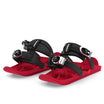
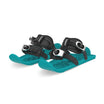












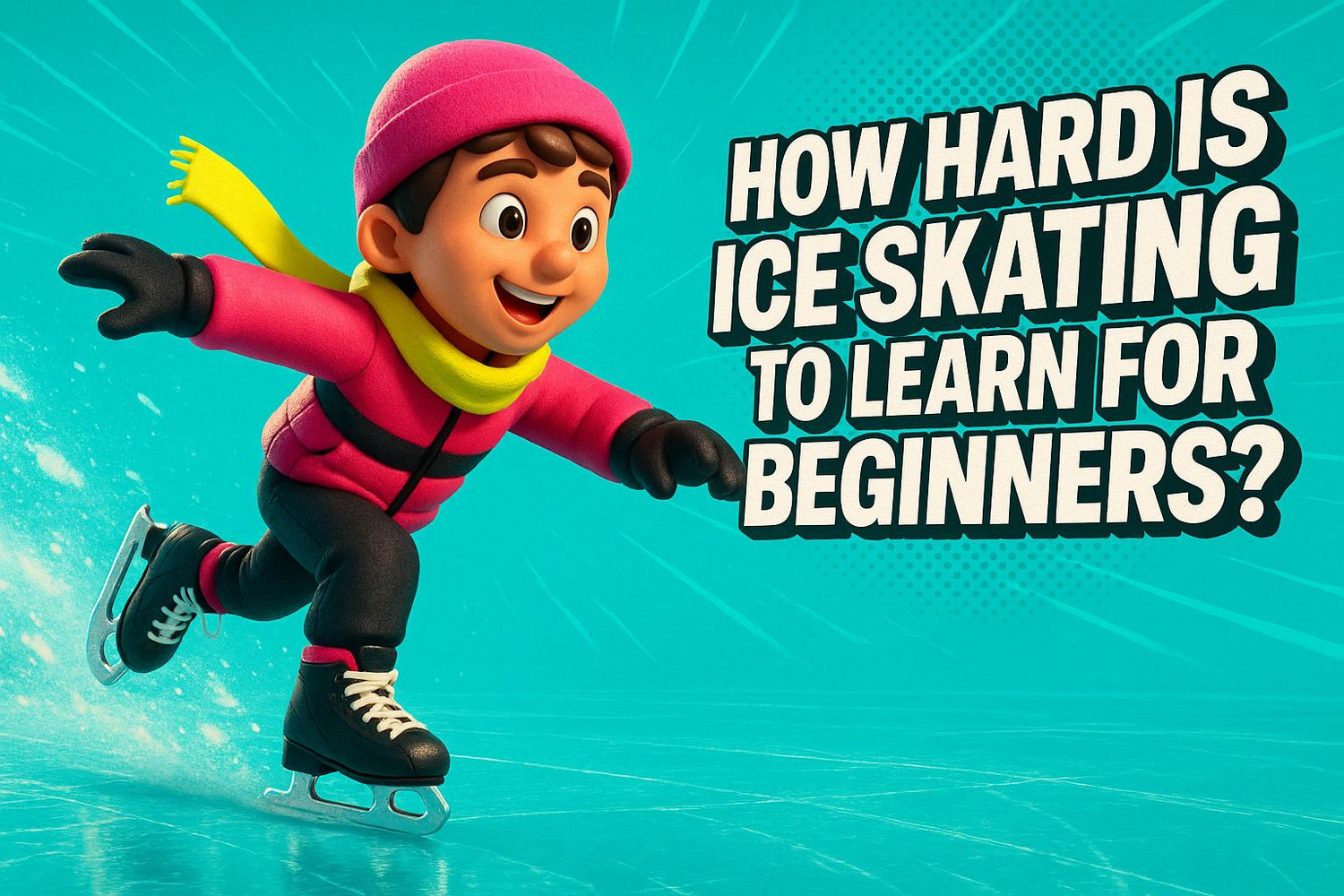
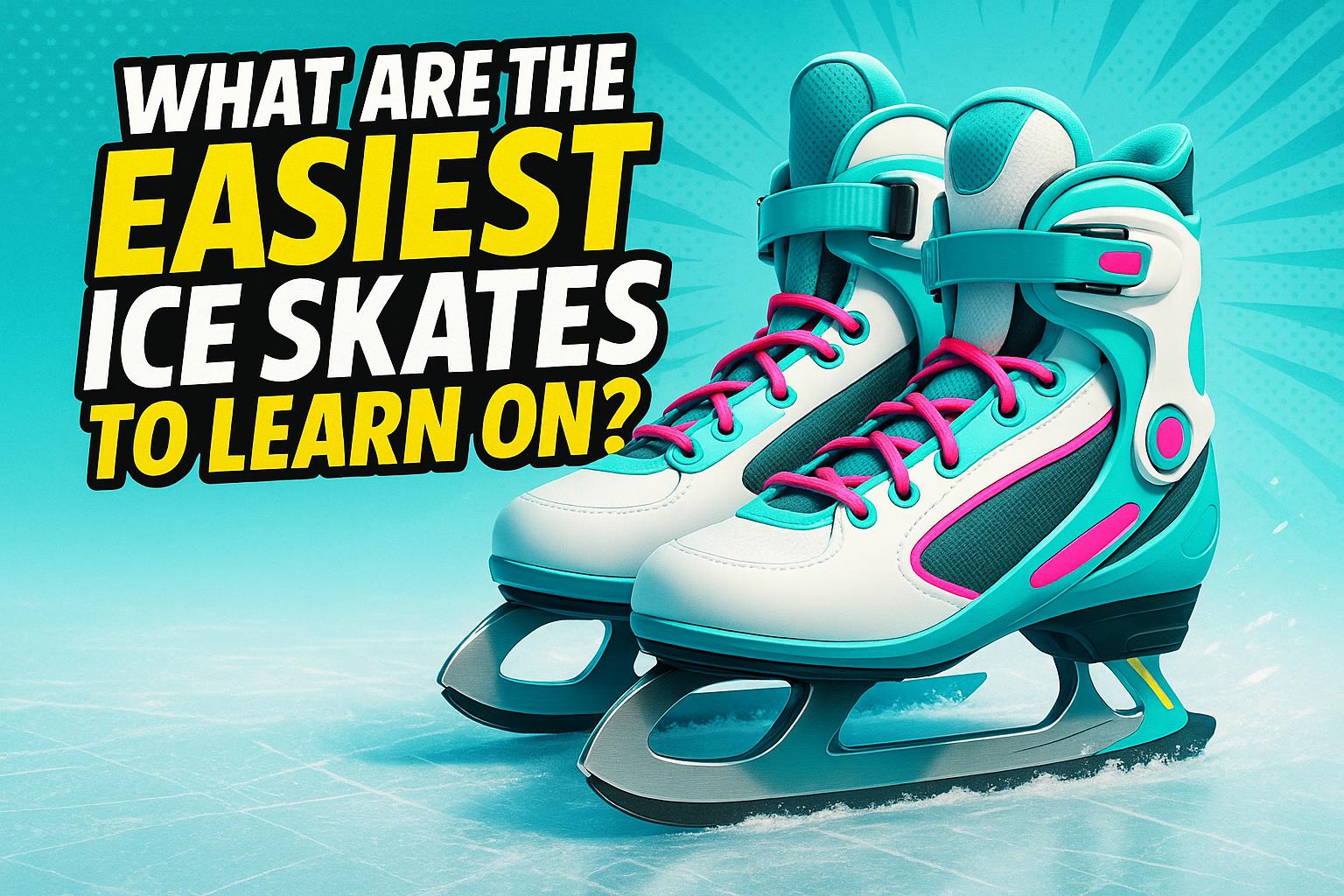
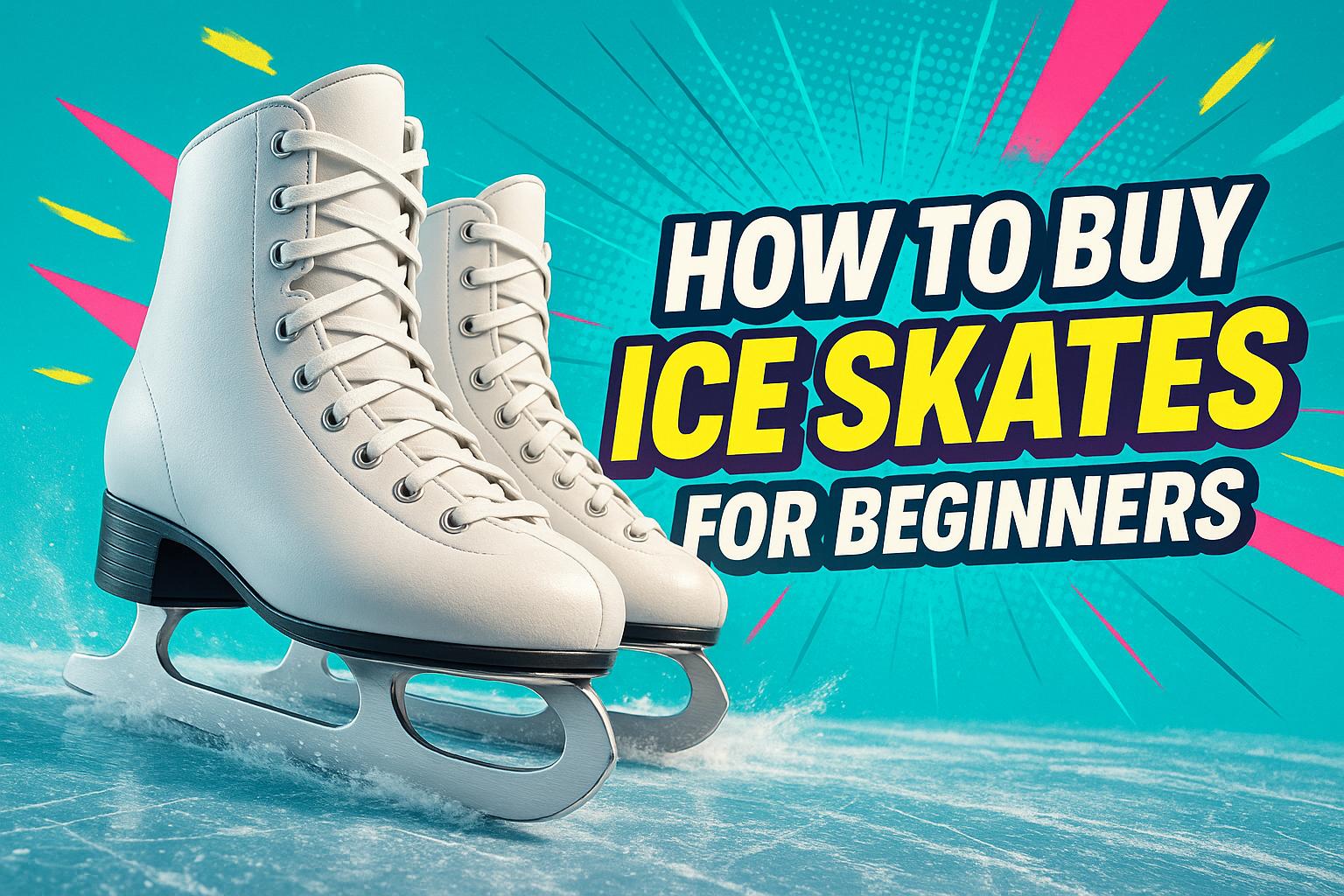




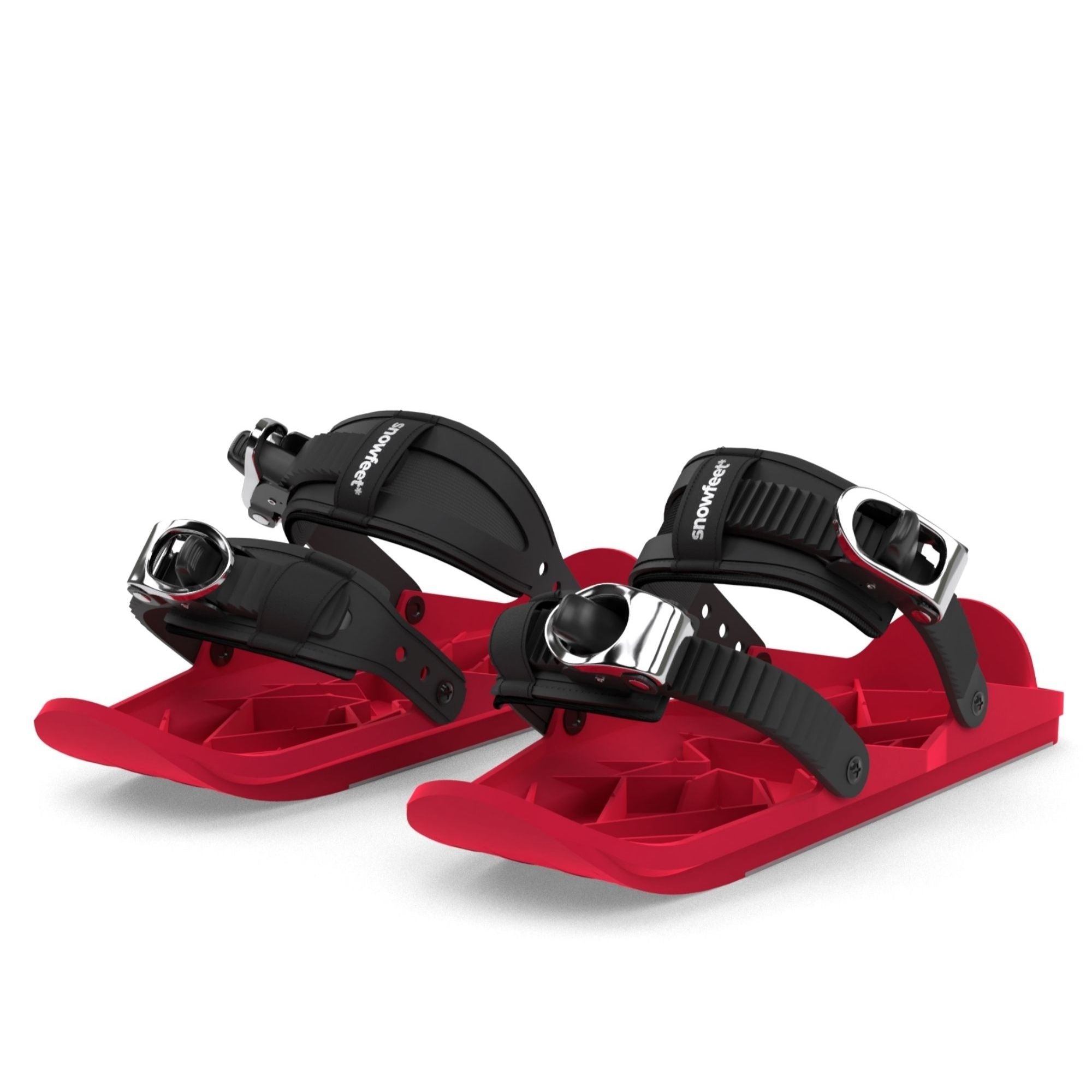
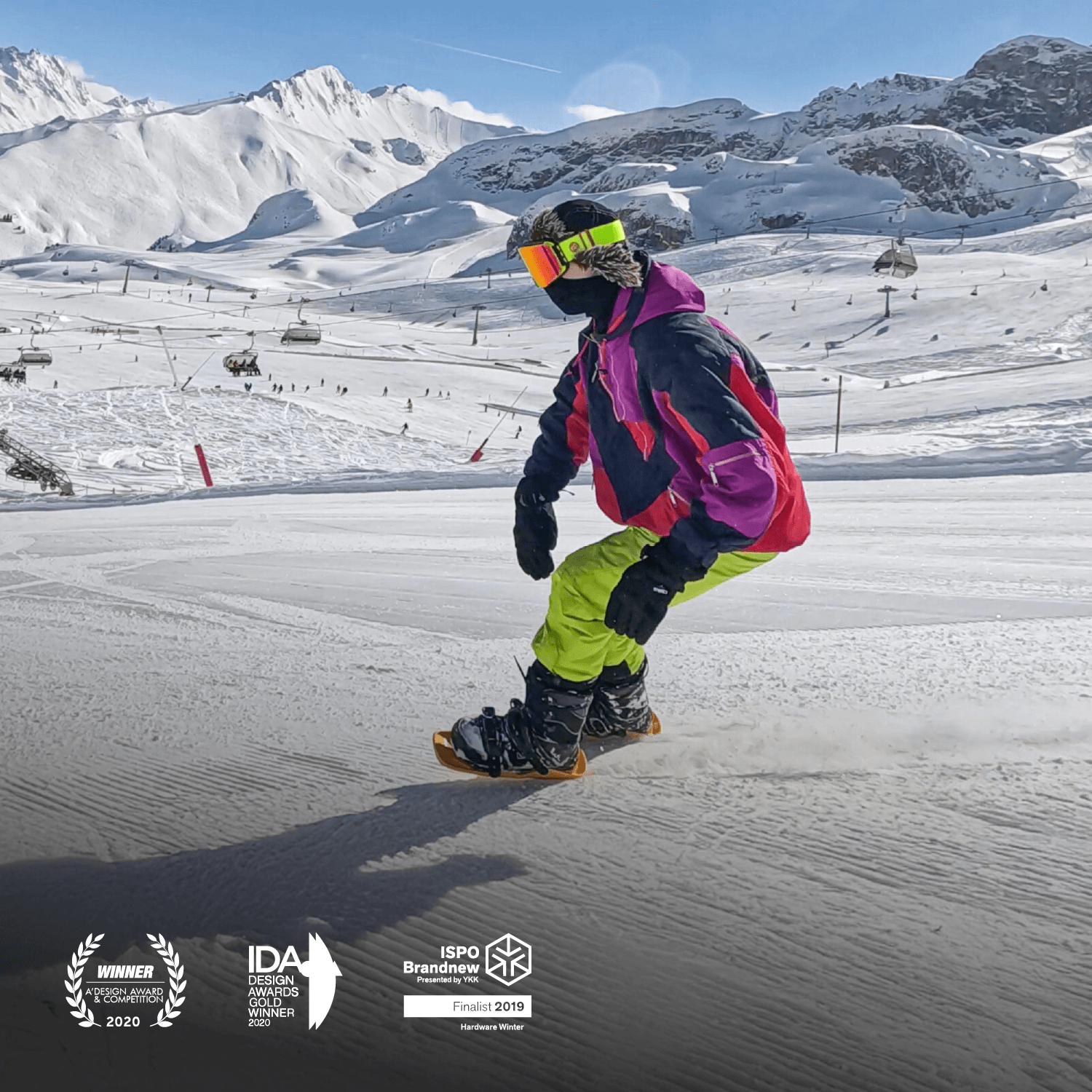




Zostaw komentarz
Ta strona jest chroniona przez hCaptcha i obowiązują na niej Polityka prywatności i Warunki korzystania z usługi serwisu hCaptcha.